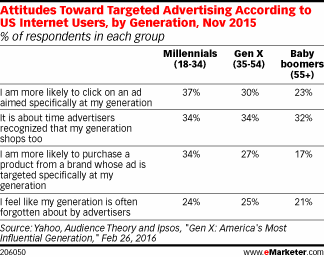Today’s roundup has a senior living emphasis — we touch on the trend of people entering senior living at an older age and the need for engaging the teams that serve them. BONUS non-senior-living item at the bottom of the post!
MOST CLICKED: Models for senior healthcare must evolve to respond to the increasing number of people entering senior living at older ages.
This was a key point of discussion at the Spring Investment Forum of the National Investment Center for Seniors Housing and Care (NIC), and it was the item that most caught the attention of 50+ marketing pros last week.
NIC assembled a panel of senior living leaders for its closing general session, including Kathryn Roberts of LeadingAge (non-profit homes and services for the aging), Larry Cohen of the American Seniors Housing Association; Tom Coble of the American Health Care Association; and Brenda Bacon of Argentum (formerly the Assisted Living Federation of America). In a follow-up post to the conference, NIC quoted Cohen as saying
“15 years ago residents who moved into senior living were 78 years of age, today that age cohort is remaining in their home.”
How can senior living communities react to this trend?
What does this rising age of entry mean?
It means a greater percentage of high-acuity patients (those with more complex health care needs), related staffing challenges plus serious lifestyle implications for residents. NIC’s blogger noted there are ways communities can both serve the needs of these residents and ensure a better balance of residents not yet needing a high level of care:
“Assisted living providers could make more of a concerted effort to develop practices that provide residents with more social an emotional resources that will help them engage in meaningful social interactions. Now is the time for assisted living providers to develop ways to measure the value of care.”
The post summarized the discussion with three action steps:

PARTNER with nearby skilled nursing and other medical facilities to provide services they don’t have in house

INVEST in services and activities that keep residents healthy and active longer (less assisting, more empowering)

ENSURE assisted living providers offer housing options and services that are attractive to younger residents
Read the coverage of NIC’s Spring Forum: http://bit.ly/1RnqAPa
MOST SHARED: The most shared content item of the week came from the LeadingAge Rhode Island 2016 Conference & Trade Show.
Creating Results’ team members were invited to speak to the members on the power of generational understanding — how greater understanding could help senior services / senior housing providers better serve and attract the “new consumer.”
While at the conference, Erin tweeted a few knowledge nuggets from a presentation by consultant Denise Boudreau-Scott.
Boudreau-Scott offered four steps for helping employees reconnect with WHY they went into elder service in the first place:

Moving team members beyond compliance and into truly passionate care isn’t just fluff. Boudreau-Scott noted that when engagement is up:
- profitability increases 27%
- productivity increases 38%
- team member retention rates improve
- resident wellness improves
And yet … despite the link between team happiness and resident satisfaction, we were surprised that not even one-third of those gathered at the conference said they currently conduct employee satisfaction surveys.
Does YOUR organization routinely measure how engaged employees are on the job, with your mission?
RELATED: In 2015, our team spent a great deal of time exploring the topic of engagement. A post in August looked at the ways Landis Communities “communicates, communicates, communicates” so that in their organization understands the how they can each affect the lives of older adults. http://bit.ly/1ogBvP5
BONUS! Turns out advertisers, often lambasted for ageism, are actually ageless in one area: annoying Internet users.
Whether you’re a Millennial, Gen Xer or Baby Boomer, it seems you are likely frustrated that targeted advertising campaigns forget you. This is the conclusion of research by Yahoo and Ipsos. There does seem to be a greater payoff for better targeting with the younger cohorts:
Learn more at http://bit.ly/1SrM3p9.
Creating Results’ proprietary research into Social, Silver Surfers also found the older the adult, the less they felt that the Internet recognized /respect their generation.
WE would never forget our readers, no matter what their generation. Please don’t forget us! Share your comments using the tool below.





